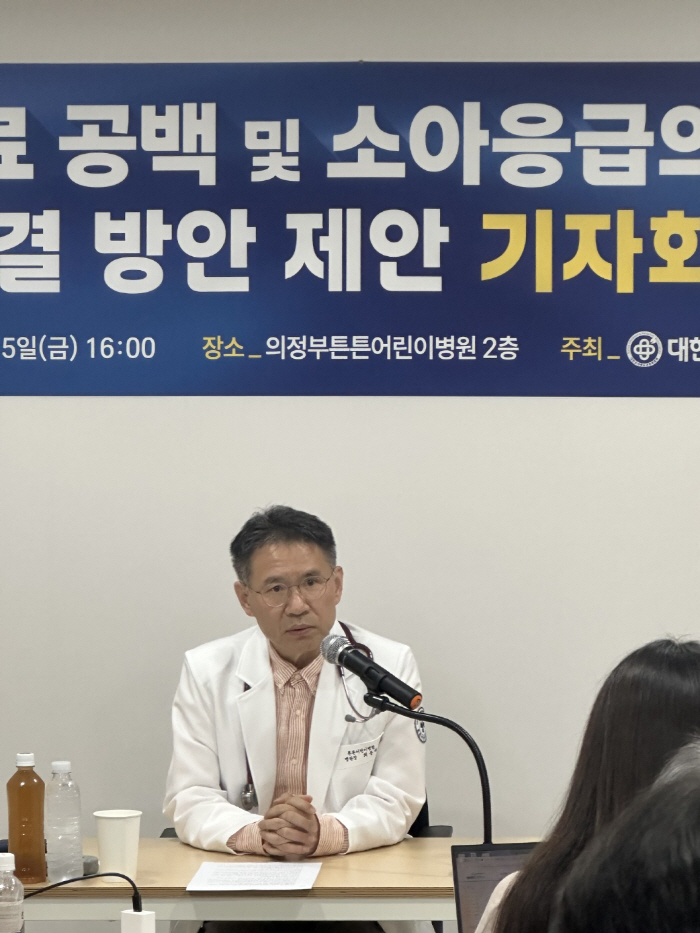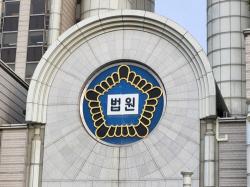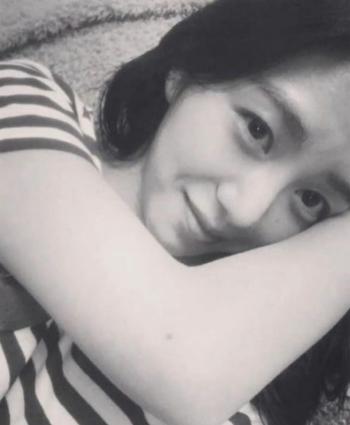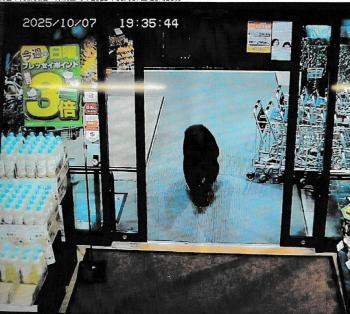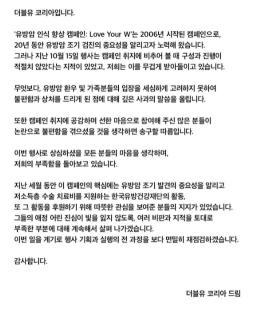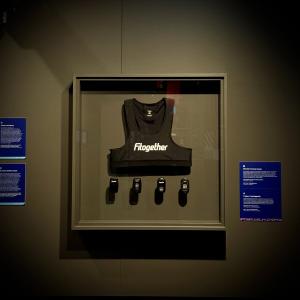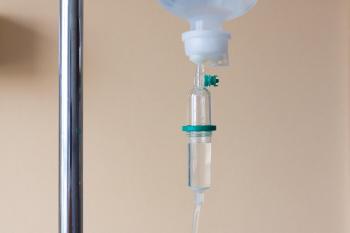Children's Emergency Type 2 System should be implemented to prevent the emergency room of the Pediatric Youth Hospital Association
Sep 05, 2025
Choi Yong-jae (head of Strong Children's Hospital of the Medical Government) held a press conference at the hospital on the 5th to announce a plan (request) to solve the pediatric emergency medical problem. On this day, Chairman Choi said, "Children's and adolescents' hospitals are a model that can terminate treatment within the medical living area for children with quasi-severe diseases. The emergency medical system for children should be established and established as soon as possible after discussions so that sick children can receive treatment and treatment comfortably" he urged.
-What about the medical vacuum?
▶I'll explain it as an example.
The death of a five-year-old boy with acute laryngitis 'Emergency Room Hit and Hit' is not a one-off incident. At that time, several emergency rooms in Seoul missed the golden time due to delays in treatment due to lack of beds and long waits, and the Pediatric Emergency Medical Association officially pointed out the vulnerability of the pediatric emergency medical system in the wake of this incident.
In addition, there has been a recent report on the reduction of medical treatment (shutdown notice) in the pediatric emergency room at local university hospitals. The hospital withdrew the curtailment of care a day after it was reported, but this is only a temporary suture, indicating that the local pediatric emergency care system is still in a crisis of the centipede.
The death of a 5-year-old laryngitis is not an exception, but a warning that can be repeated anywhere in the country. The report on the reduction of the pediatric emergency at Chonnam National University shows that the warning has become a reality.
Repeated phenomena continue to appear. If the first and second medical institutions collapse, even the last bastion of the region will be shaken.
-Why is there a need for a 'Child emergency medical system'?
▶ Pediatric diseases are characterized by prevalence and mass occurrence. Even if only tertiary medical institutions are strengthened, the whole will collapse if the primary and secondary medical institutions collapse. The recent report on the reduction of pediatric emergency treatment at local university hospitals symbolizes that the weakening of the safety net can shake up to higher hospitals.
The whole will survive only when the ability of primary and secondary medical institutions to treat and terminate behind the scenes is systematically guaranteed. This is why it is necessary to establish a pediatric emergency medical system.
- Why does it matter now?
▶This is not just a discussion, but a golden time for policy. Despite the return of the medical doctor, there have been reports of a reduction in the pediatric emergency room of the provincial tertiary hospital. This is proof that the crisis has never been resolved.
With fewer bases to treat children, another medical gap can arise at any time. If the system is slowed, the next victim could be another child.
- What is the pediatric emergency medical system?
▶This is an emergency medical network for children only that reflects the specificity of pediatric and adolescent patients (differences in diagnosis and treatment by age, accompanying guardians, and dedicated personnel and facilities). Children's specific diseases such as febrile cramps, bronchiolitis, and intussusception are common, and if they are not handled quickly and properly, guardians flock to the emergency room of a university hospital, causing overcrowding and delays in treatment.
The pediatric emergency medical system is cost-effective because it can effectively handle more mild and moderate patients with less cost and manpower than the emergency room. Through this, the pediatric emergency room is a necessary system because it can preserve its original role, which is in charge of severe disease, and can efficiently allocate resources nationally.
-Why should the pediatric emergency medical system be divided into type 1 and type 2 stages?
▶This division is not a simple administrative convenience, but a design to reasonably match the cost and level of support.
Type 1 has relatively low installation and maintenance costs due to low manpower and facilities input, and can be deployed widely to increase accessibility, and Type 2 is a high-cost and high-level facility, but it greatly reduces the power and social costs of high-level hospitals by solving quasi-severe diseases locally.
Therefore, it is a rational stage classification that maximizes cost-effectiveness and a safety device to save the entire emergency medical system of the country.
-What is the name 'Children's Youth Hospital Type 2 (Children's Emergency Type 2)' that requires intensive discussion, and why is it important?
▶2 is a regional-based pediatric emergency medical institution model designed to 'terminate care" for severely ill pediatric patients in the treatment area. In terms of necessity and importance, children have epidemic and mass occurrence characteristics, so if there is no type 2, the tertiary is paralyzed.
The designation criteria (example) should designate hospitals with realistic and step-by-step standards such as regular professional personnel, observation beds, basic inspections, initial arbitration, power system, and KPI reporting.
In financial and compensation design, the structure of prior support (70%) + performance-linked post-support (30%) and additional points for performance management (up to 5% of the post-standard amount) should be elaborated according to roles, capabilities, and performance.
For this, KPI design is required. The Key Performance Indicator (KPI) design is a criterion for determining how quickly and safely the hospital handled patients with difficult diseases.
For example, there are night waiting times, the power rate of patients under the age of 5, the rate of examination and treatment within 6 hours of patients with fever under 3 months, and the preventable hospitalization rate.
Setting up and disclosing these KPIs and directly linking performance to incentives can be designed to provide more support to good organizations.
In addition, a loop (capability) with standard power paths, contact systems, and time goals should be operated so that Type 1-2-3 is not cut off in units of the living area. In addition, rapid request-acceptance-return should be standardized through direct communication networks and information sharing platforms.
To this end, stable financial support suitable for each installation and operation cost structure of Type 1 and Type 2, supplementation of reasonable designation standards, and balanced arrangement between regions should be preempted.
In particular, since Type 2 is in charge of high-level treatment, a compensation system for manpower, facilities, and preliminary injuries beyond simple medical support is needed.
However, pediatric care at night and on holidays is an area where the burden of specialists is high. It is unsustainable with an incentive-free 's sacrifice model'.
Therefore, the additional fee for pediatric specialists, education linkage for majors, and public support-type manpower dispatch system should be combined.
It is inefficient to operate a type 2 center 24 hours a day like an emergency room. If high-cost personnel are always on standby for hours when there are few patients (9 hours at night), professional care capabilities are distributed and resources are wasted. The original strength of Type 2 is that it is the midpoint.
Although it is difficult to operate with only lower compensation than the emergency room, it requires more cost and support than the type 1, but the quasi-severe illness can be safely resolved in the region.
Therefore, it is the most cost-effective alternative to professionalism, and the efficiency and stability of the national emergency medical system can be guaranteed at the same time.
It also has the effect of maintaining manpower. The combination of performance-linked compensation and local government support can promote the attraction and maintenance of professional manpower.
Looking at the expected effects of pediatric emergency type 2, first of all, in the case of patients, rapid termination of the living area can reduce the risk of delay, complications, and death. On the system side, the third severe concentration problem is solved and efficiency and recovery elasticity are improved. In the manpower problem, it can be expected to ease departure and promote education investment by providing compensation appropriate to the role. Through this, the local government can visualize the 'Child Medical Safety Net' to improve reliability and settlement of local governments.
-What is the situation of the discussion of Type 1 and 2 of the pediatric emergency medical center?
▶It is not a final decision at this time. It is a proposed model in the process of collecting opinions. To put it simply, it is similar to the Moonlight Children's Hospital system that is already familiar to the public. From now on, full-fledged discussions should take place for our children, who are sick in one mind and cannot go to the hospital comfortably.
Like Moonlight Children's Hospital's outpatient type 1, the pediatric emergency medical center type 1 provides outpatient medical treatment at night and on holidays, and provides prompt medical treatment instead of the emergency room. The installation and maintenance cost is relatively low, so it can be installed widely to increase accessibility.
Like Moonlight Children's Hospital Hospital Hospital Type 2, the pediatric emergency medical center operates not only outpatient but also short-term inpatient beds, treating patients with quasi-emergency and secondary diseases such as febrile cramps, pneumonia, asthma attacks, dehydration, and intestinal overlap for one to two days. However, this is incomparably expensive to install and maintain, and requires high difficult medical provision.
In other words, Type 1 can be understood as an outpatient base that expands accessibility, and Type 2 is an outpatient and hospitalized quasi-emergency room that requires enormous investment and professional capabilities.
-What is effective from the perspective of parents and guardians if the pediatric emergency medical center is divided into type 1 and type 2?
▶"Where should I go if my child is sick at night?" can reduce anxiety. This is because it is possible to quickly respond to first-line treatment in close type 1, to short-term inpatient treatment in type 2 if necessary, and to transfer to third-line treatment if it is more severe.
- Why not send a patient straight to a tertiary hospital?
▶This is because, in reality, tertiary base hospitals cannot receive patients indefinitely.
If all patients flock to the third stage, mild and severe patients will erode critical care resources. Conversely, if type 1 absorbs mild cases and type 2 covers quasi-severe cases, the tertiary hospital can focus on real critical care.
Without this structure, the tertiary falls into endless overcrowding and atmosphere, eventually missing the golden time, and the damage is entirely returned to the children.
- What is the difference in the role of pediatric and adolescent hospitals compared to primary medical institutions?
▶ Primary medical institutions are very important as the first entry point for children and gatekeepers. However, pediatric and adolescent hospitals have regular inspection and diagnosis capabilities such as ultrasound, blood, and imaging, early intervention for intussusception, and early intervention routes for convulsive diseases including epilepsy, and cover quasi-severe pediatric emergencies up to PKTAS 2.5. In other words, it is the unique role to take on the function of behind-the-scenes treatment and termination of treatment.
-How should we design normalization and differential compensation?
▶The cost of maintaining the inspection and diagnosis infrastructure, the ability to terminate quasi-critical conditions, and the risk of background medical care are accompanied by additional costs and responsibilities. Therefore, roles, capabilities, and performance (KPI) should be reflected in the evaluation and reasonably differentially compensated. The pilot project of the regional cooperation system currently in effect also has a P4P structure that reflects this. However, apart from the P4P and KPI structures, children's and adolescent hospitals in areas with poor settlement conditions due to being far from the metropolitan area should prepare separate support standards. Since these regions are structurally disadvantageous in terms of recruitment and maintenance of medical personnel and patient accessibility, stable support devices must be supplemented in addition to performance linkage.
-What is the current position of the National Assembly and the government on discussions such as policies and laws related to children and adolescents?
▶The pediatric emergency medical center is included in the Lee Jae-myung administration's national task. In addition, it is said that legislative discussions to strengthen the medical system for children and adolescents are active. It is something that should be welcomed from the standpoint of caring for a child. The key is to materialize the bill without delay, and to include the purpose of designating a pediatric emergency medical center and financial support without wavering. It is hoped that the direction of type 1 and type 2 classification and performance evaluation and differential support will be reflected as the purpose of the association's opinion.
-What is your position on the pilot project of the regional cooperation system for pediatric care?
▶ This project is already subject to a P4P framework, such as 70% pre-support + 30% post-support linked to performance, and additional points for performance management (up to 5%). Budget increase and KPI elaboration are needed for the fastest effect. In particular, on-site indicators such as improvement of quasi-severe termination capacity and conversion rate, the level of provision of medical treatment after regular hours, and the rate of implementation of direct contact networks should be strengthened. It is desirable to focus on medical care and the government on performance management by easing the administrative burden.
-What about the medical vacuum?
▶I'll explain it as an example.
The death of a five-year-old boy with acute laryngitis 'Emergency Room Hit and Hit' is not a one-off incident. At that time, several emergency rooms in Seoul missed the golden time due to delays in treatment due to lack of beds and long waits, and the Pediatric Emergency Medical Association officially pointed out the vulnerability of the pediatric emergency medical system in the wake of this incident.
In addition, there has been a recent report on the reduction of medical treatment (shutdown notice) in the pediatric emergency room at local university hospitals. The hospital withdrew the curtailment of care a day after it was reported, but this is only a temporary suture, indicating that the local pediatric emergency care system is still in a crisis of the centipede.
The death of a 5-year-old laryngitis is not an exception, but a warning that can be repeated anywhere in the country. The report on the reduction of the pediatric emergency at Chonnam National University shows that the warning has become a reality.
Repeated phenomena continue to appear. If the first and second medical institutions collapse, even the last bastion of the region will be shaken.
-Why is there a need for a 'Child emergency medical system'?
▶ Pediatric diseases are characterized by prevalence and mass occurrence. Even if only tertiary medical institutions are strengthened, the whole will collapse if the primary and secondary medical institutions collapse. The recent report on the reduction of pediatric emergency treatment at local university hospitals symbolizes that the weakening of the safety net can shake up to higher hospitals.
The whole will survive only when the ability of primary and secondary medical institutions to treat and terminate behind the scenes is systematically guaranteed. This is why it is necessary to establish a pediatric emergency medical system.
- Why does it matter now?
▶This is not just a discussion, but a golden time for policy. Despite the return of the medical doctor, there have been reports of a reduction in the pediatric emergency room of the provincial tertiary hospital. This is proof that the crisis has never been resolved.
With fewer bases to treat children, another medical gap can arise at any time. If the system is slowed, the next victim could be another child.
- What is the pediatric emergency medical system?
▶This is an emergency medical network for children only that reflects the specificity of pediatric and adolescent patients (differences in diagnosis and treatment by age, accompanying guardians, and dedicated personnel and facilities). Children's specific diseases such as febrile cramps, bronchiolitis, and intussusception are common, and if they are not handled quickly and properly, guardians flock to the emergency room of a university hospital, causing overcrowding and delays in treatment.
The pediatric emergency medical system is cost-effective because it can effectively handle more mild and moderate patients with less cost and manpower than the emergency room. Through this, the pediatric emergency room is a necessary system because it can preserve its original role, which is in charge of severe disease, and can efficiently allocate resources nationally.
-Why should the pediatric emergency medical system be divided into type 1 and type 2 stages?
▶This division is not a simple administrative convenience, but a design to reasonably match the cost and level of support.
Type 1 has relatively low installation and maintenance costs due to low manpower and facilities input, and can be deployed widely to increase accessibility, and Type 2 is a high-cost and high-level facility, but it greatly reduces the power and social costs of high-level hospitals by solving quasi-severe diseases locally.
Therefore, it is a rational stage classification that maximizes cost-effectiveness and a safety device to save the entire emergency medical system of the country.
-What is the name 'Children's Youth Hospital Type 2 (Children's Emergency Type 2)' that requires intensive discussion, and why is it important?
▶2 is a regional-based pediatric emergency medical institution model designed to 'terminate care" for severely ill pediatric patients in the treatment area. In terms of necessity and importance, children have epidemic and mass occurrence characteristics, so if there is no type 2, the tertiary is paralyzed.
The designation criteria (example) should designate hospitals with realistic and step-by-step standards such as regular professional personnel, observation beds, basic inspections, initial arbitration, power system, and KPI reporting.
In financial and compensation design, the structure of prior support (70%) + performance-linked post-support (30%) and additional points for performance management (up to 5% of the post-standard amount) should be elaborated according to roles, capabilities, and performance.
For this, KPI design is required. The Key Performance Indicator (KPI) design is a criterion for determining how quickly and safely the hospital handled patients with difficult diseases.
For example, there are night waiting times, the power rate of patients under the age of 5, the rate of examination and treatment within 6 hours of patients with fever under 3 months, and the preventable hospitalization rate.
Setting up and disclosing these KPIs and directly linking performance to incentives can be designed to provide more support to good organizations.
In addition, a loop (capability) with standard power paths, contact systems, and time goals should be operated so that Type 1-2-3 is not cut off in units of the living area. In addition, rapid request-acceptance-return should be standardized through direct communication networks and information sharing platforms.
To this end, stable financial support suitable for each installation and operation cost structure of Type 1 and Type 2, supplementation of reasonable designation standards, and balanced arrangement between regions should be preempted.
In particular, since Type 2 is in charge of high-level treatment, a compensation system for manpower, facilities, and preliminary injuries beyond simple medical support is needed.
However, pediatric care at night and on holidays is an area where the burden of specialists is high. It is unsustainable with an incentive-free 's sacrifice model'.
Therefore, the additional fee for pediatric specialists, education linkage for majors, and public support-type manpower dispatch system should be combined.
It is inefficient to operate a type 2 center 24 hours a day like an emergency room. If high-cost personnel are always on standby for hours when there are few patients (9 hours at night), professional care capabilities are distributed and resources are wasted. The original strength of Type 2 is that it is the midpoint.
Although it is difficult to operate with only lower compensation than the emergency room, it requires more cost and support than the type 1, but the quasi-severe illness can be safely resolved in the region.
Therefore, it is the most cost-effective alternative to professionalism, and the efficiency and stability of the national emergency medical system can be guaranteed at the same time.
It also has the effect of maintaining manpower. The combination of performance-linked compensation and local government support can promote the attraction and maintenance of professional manpower.
Looking at the expected effects of pediatric emergency type 2, first of all, in the case of patients, rapid termination of the living area can reduce the risk of delay, complications, and death. On the system side, the third severe concentration problem is solved and efficiency and recovery elasticity are improved. In the manpower problem, it can be expected to ease departure and promote education investment by providing compensation appropriate to the role. Through this, the local government can visualize the 'Child Medical Safety Net' to improve reliability and settlement of local governments.
-What is the situation of the discussion of Type 1 and 2 of the pediatric emergency medical center?
▶It is not a final decision at this time. It is a proposed model in the process of collecting opinions. To put it simply, it is similar to the Moonlight Children's Hospital system that is already familiar to the public. From now on, full-fledged discussions should take place for our children, who are sick in one mind and cannot go to the hospital comfortably.
Like Moonlight Children's Hospital's outpatient type 1, the pediatric emergency medical center type 1 provides outpatient medical treatment at night and on holidays, and provides prompt medical treatment instead of the emergency room. The installation and maintenance cost is relatively low, so it can be installed widely to increase accessibility.
Like Moonlight Children's Hospital Hospital Hospital Type 2, the pediatric emergency medical center operates not only outpatient but also short-term inpatient beds, treating patients with quasi-emergency and secondary diseases such as febrile cramps, pneumonia, asthma attacks, dehydration, and intestinal overlap for one to two days. However, this is incomparably expensive to install and maintain, and requires high difficult medical provision.
In other words, Type 1 can be understood as an outpatient base that expands accessibility, and Type 2 is an outpatient and hospitalized quasi-emergency room that requires enormous investment and professional capabilities.
-What is effective from the perspective of parents and guardians if the pediatric emergency medical center is divided into type 1 and type 2?
▶"Where should I go if my child is sick at night?" can reduce anxiety. This is because it is possible to quickly respond to first-line treatment in close type 1, to short-term inpatient treatment in type 2 if necessary, and to transfer to third-line treatment if it is more severe.
- Why not send a patient straight to a tertiary hospital?
▶This is because, in reality, tertiary base hospitals cannot receive patients indefinitely.
If all patients flock to the third stage, mild and severe patients will erode critical care resources. Conversely, if type 1 absorbs mild cases and type 2 covers quasi-severe cases, the tertiary hospital can focus on real critical care.
Without this structure, the tertiary falls into endless overcrowding and atmosphere, eventually missing the golden time, and the damage is entirely returned to the children.
- What is the difference in the role of pediatric and adolescent hospitals compared to primary medical institutions?
▶ Primary medical institutions are very important as the first entry point for children and gatekeepers. However, pediatric and adolescent hospitals have regular inspection and diagnosis capabilities such as ultrasound, blood, and imaging, early intervention for intussusception, and early intervention routes for convulsive diseases including epilepsy, and cover quasi-severe pediatric emergencies up to PKTAS 2.5. In other words, it is the unique role to take on the function of behind-the-scenes treatment and termination of treatment.
-How should we design normalization and differential compensation?
▶The cost of maintaining the inspection and diagnosis infrastructure, the ability to terminate quasi-critical conditions, and the risk of background medical care are accompanied by additional costs and responsibilities. Therefore, roles, capabilities, and performance (KPI) should be reflected in the evaluation and reasonably differentially compensated. The pilot project of the regional cooperation system currently in effect also has a P4P structure that reflects this. However, apart from the P4P and KPI structures, children's and adolescent hospitals in areas with poor settlement conditions due to being far from the metropolitan area should prepare separate support standards. Since these regions are structurally disadvantageous in terms of recruitment and maintenance of medical personnel and patient accessibility, stable support devices must be supplemented in addition to performance linkage.
-What is the current position of the National Assembly and the government on discussions such as policies and laws related to children and adolescents?
▶The pediatric emergency medical center is included in the Lee Jae-myung administration's national task. In addition, it is said that legislative discussions to strengthen the medical system for children and adolescents are active. It is something that should be welcomed from the standpoint of caring for a child. The key is to materialize the bill without delay, and to include the purpose of designating a pediatric emergency medical center and financial support without wavering. It is hoped that the direction of type 1 and type 2 classification and performance evaluation and differential support will be reflected as the purpose of the association's opinion.
-What is your position on the pilot project of the regional cooperation system for pediatric care?
▶ This project is already subject to a P4P framework, such as 70% pre-support + 30% post-support linked to performance, and additional points for performance management (up to 5%). Budget increase and KPI elaboration are needed for the fastest effect. In particular, on-site indicators such as improvement of quasi-severe termination capacity and conversion rate, the level of provision of medical treatment after regular hours, and the rate of implementation of direct contact networks should be strengthened. It is desirable to focus on medical care and the government on performance management by easing the administrative burden.
|
This article was translated by Naver AI translator.
